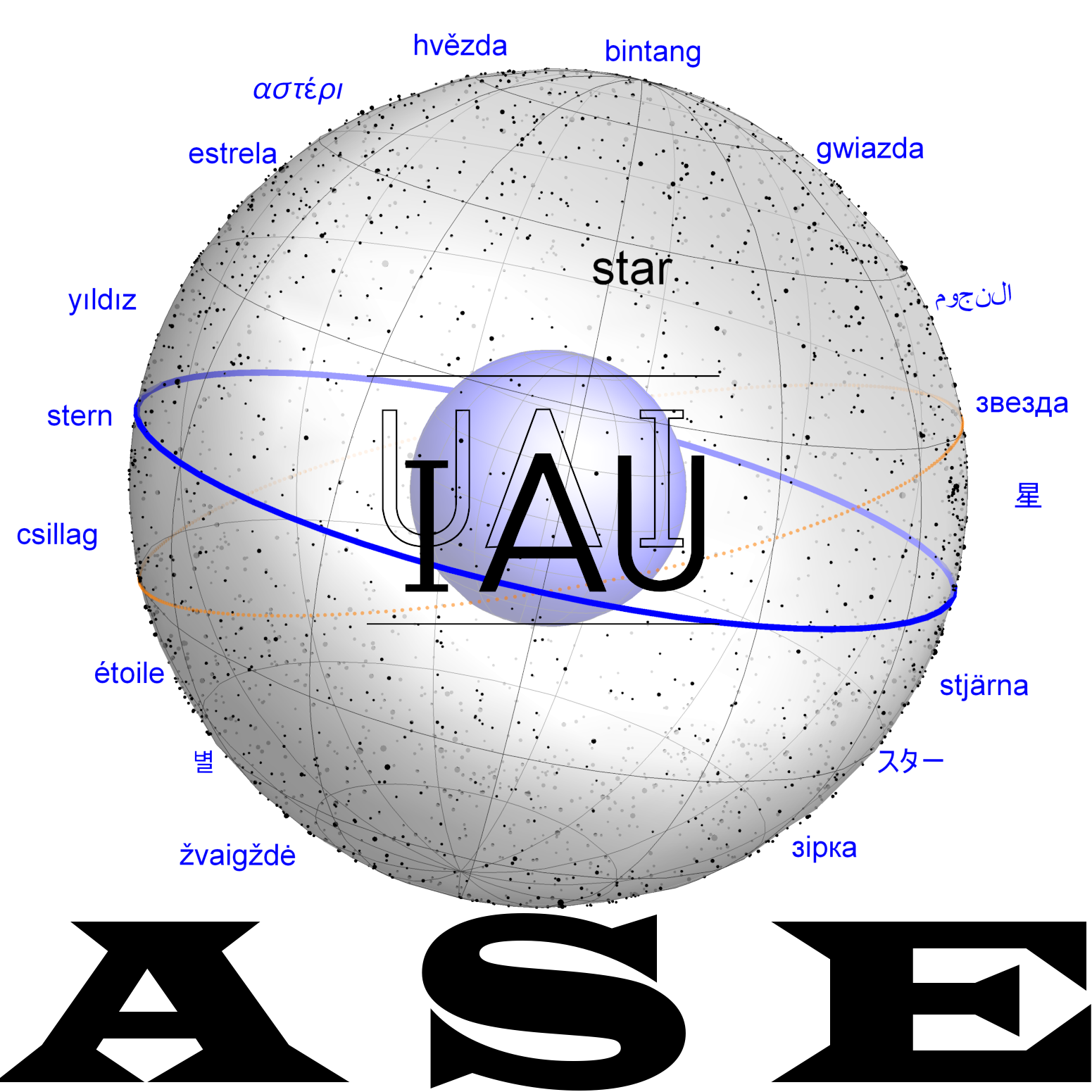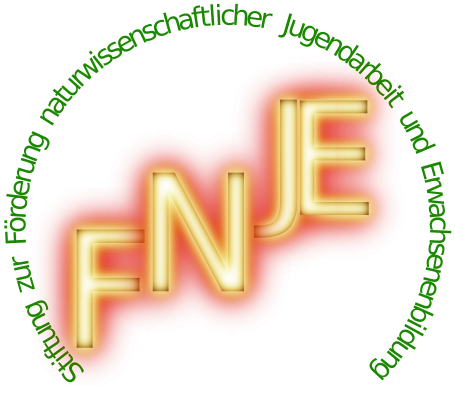MAŠ.MAŠ: Difference between revisions
DavidHilder (talk | contribs) No edit summary |
No edit summary |
||
| Line 1: | Line 1: | ||
<sup>mul / d</sup>MAŠ.MAŠ is Sumerian with the Akkadian equivalent ''māšū'', The Twins. The general term MAŠ is used to designate several ancient Mesopotamian asterisms where two stars of similar brightness seem to form a pair in the sky, among them the constellation that survives today as Gemini, The Twins. The Gemini-twins were called The Great Twins ([[MAŠ.TAB.BA.GAL.GAL|MAŠ.TAB.BA GAL.GAL]]) in ancient Mesopotamia in order to distinguish them from several other "twin"-like asterims. Similarly, the repetition of the term MAŠ.MAŠ is an emphasise; it can be a plural in Sumerian or any other emphasis (e.g. the most famous, the brightest, the great). |
|||
<sup>mul / d</sup>MAŠ.MAŠ is an ancient Mesopotamian asterism. |
|||
==Dictionary== |
==Dictionary== |
||
=== Kurtik with Hilder, Hoffmann, Horowitz, Kim === |
=== Kurtik with Hilder, Hoffmann, Horowitz, Kim === |
||
= ''māšū'' "Gemini"; |
|||
| ⚫ | |||
| ⚫ | |||
* 2) = ziqpu XVIII (α Gem) [G. 266]. |
|||
{| class="wikitable" |
{| class="wikitable" |
||
|+ |
|+ |
||
| Line 8: | Line 12: | ||
!Identifications |
!Identifications |
||
|- |
|- |
||
|'''Lexical texts.''' |
|'''Lexical texts.''' |
||
(1) Urra XXII series: <sup>[mul]</sup>maš.maš = ma-šu-u "Gemini" [SpTU III, 114A v 37; Bloch-Horowitz 2015, 108:294ʹ]. |
* (1) Urra XXII series: <sup>[mul]</sup>maš.maš = ma-šu-u "Gemini" [SpTU III, 114A v 37; Bloch-Horowitz 2015, 108:294ʹ]. |
||
* (2) Series A I/6, 111-114: ma-áš-ma-áš ˹MAŠ.MAŠ˺ = …= ma-šu-u, tu-a-mu, <sup>d</sup>lugal-gir<sub>3</sub>-ra, <sup>d</sup>mes-lam-ta-e<sub>3</sub>-a [MSL XIV, 227–228]. |
|||
| |
| |
||
|- |
|- |
||
|'''Lists of ziqpu-stars.''' |
|'''Lists of ziqpu-stars.''' |
||
VAT 16436: |
|||
| ⚫ | |||
| ⚫ | |||
* "Gemini, Nabu and Nergal // 2 (stars) // 10800 cubits" [Schaumberger 1952, 226-7:10]. |
|||
| |
| |
||
|- |
|- |
||
|'''Anaphora.''' |
|||
|'''Anaphora.''' BM 36609+: TA<sup>?</sup> 5<sup>?</sup> UŠ ˹kin<sup>??</sup>˺-ṣa NU KUR / EN a-si-du / MAŠ.MAŠ TA SAG-šu<sub>2</sub> EN TIL-šu<sub>2</sub> KUR "(When the stars culminate) from 5?0, not reaching (i.e., in front of) the Knee, / to the Heel (of the Demon with the Gaping Mouth). / (in this interval) the Twins, from their beginning to their end, ascend." [Roughton-Steele-Walker 2004, 548, Section 7: obv. iii 20-22]; time of rising: 200 [ibid. 549]. MLC 1866 iv 18-19: <sup>d</sup>MAŠ.MAŠ <sup>d</sup>tu-ma-mu<sup>meš</sup> / ša<sub>2</sub> ina pa-na-at GUB-zu "The Gemini, the twins who stand ahead" [Beaulieu et al. 2018, 38, 42]. |
|||
* BM 36609+: |
|||
** TA<sup>?</sup> 5<sup>?</sup> UŠ ˹kin<sup>??</sup>˺-ṣa NU KUR / EN a-si-du / MAŠ.MAŠ TA SAG-šu<sub>2</sub> EN TIL-šu<sub>2</sub> KUR |
|||
** "(When the stars culminate) from 5?0, not reaching (i.e., in front of) the Knee, / to the Heel (of the Demon with the Gaping Mouth). / (in this interval) the Twins, from their beginning to their end, ascend." |
|||
* [Roughton-Steele-Walker 2004, 548, Section 7: obv. iii 20-22]; time of rising: 200 [ibid. 549]. |
|||
| |
|||
|- |
|||
|MLC 1866 iv 18-19: |
|||
* <sup>d</sup>MAŠ.MAŠ <sup>d</sup>tu-ma-mu<sup>meš</sup> / ša<sub>2</sub> ina pa-na-at GUB-zu |
|||
* "The Gemini, the twins who stand ahead" [Beaulieu et al. 2018, 38, 42]. |
|||
| |
| |
||
|- |
|- |
||
|'''"Astronomical Diaries and Related Texts".''' |
|'''"Astronomical Diaries and Related Texts".''' |
||
1) MAŠ.MAŠ — the sign of the zodiac Gemini [AD I-III, passim], the earliest example in the diary, -418 [ibid., 62, no.-418:5, 12]; |
* 1) MAŠ.MAŠ — the sign of the zodiac Gemini [AD I-III, passim], the earliest example in the diary, -418 [ibid., 62, no.-418:5, 12]; |
||
* 2) the designation MAŠ.MAŠ was part of the names of the five "normal stars" (nos. s8-12 in m39[[MUL2.ŠID.MEŠ|MUL<sub>2</sub>.ŠID.MEŠ]]). |
|||
| |
| |
||
|- |
|- |
||
| Line 27: | Line 46: | ||
| |
| |
||
|- |
|- |
||
|'''Late astrology, magic, and the calendar.''' |
|'''Late astrology, magic, and the calendar.''' |
||
* (1) "Horoscopes". MAŠ.MAŠ is the zodiac sign Gemini [BH, passim]. |
|||
(1) "Horoscopes". MAŠ.MAŠ is the zodiac sign Gemini [BH, passim]. (2) "Lunaries." (a) BRM IV 20: ki <sup>mul</sup>maš.maš "Region of Gemini" (in the same text: ki <sup>mul</sup><maš>.tab.ba.gal. gal "Region of the Great Twins"), it corresponds to the following activities: magic ritual against threat to life, (ritual against disease) fatigue, (ritual against) "female spirit" (it seems to refer also to disease), the noble does not heed slander [Ungnad 1941-44, 256, 268-269:9, 10, 30, 38; Reiner 1995, 108-109; Emelyanov 1999, 193-194]. (b) BRM IV 19: maš.maš — the designation for the zodiac sign Gemini in the zodiacal scheme known as "dodecatemoria" [Ungnad 1941-44, 274-275: c, f, k, 10, 33; Neugeb.-Sachs 1952-53]. (3) "Microzodiac." The division of the zodiac sign Hired Man (=Aries) into 12 parts: [3-tu]m ḫa.la <sup>múl</sup>maš.maš šum<sub>3</sub>-šu<sub>2</sub> "[3]-th part, its name is Gemini" [TU, 14:15; Sachs 1952, 66]. (4) Text W 23313/3: [DIŠ KI <sup>mul</sup>MAŠ].˹MAŠ˺ U<sub>3</sub>.T[U...] "If he, [when the Gem]ini (culminates), is born..." [SpTU V, 265:2']. (5) W22554/2: ki-i <sup>múl</sup>MAŠ.MAŠ a-na ziq-p[i...] / <sup>múl</sup>MAŠ.TAB.BA.GAL.GAL <sup>múl</sup>SIPA.ZI.AN.NA / a-di-i <sup>d</sup>Šamaš <sup>múl</sup>SIPA.ZI.AN. NA [...] "If the Gemini culmin[ates and the (lunar) eclipse should begin], / The Great Gemini, the True Shepherd of Anu. / Until the Sun of the True Shepherd of Anu [reaches...] " [SpTU III, 102:3-5]. (6) Zodiacal astrology. a) KI <sup>múl</sup>SIPA u MAŠ.MAŠ UŠ<sub>2</sub> ki-li "Region of the Gemini: death in captivity" [SpTU II, 43:21]; for a parallel see. [TU, 14: 22; Sachs 1952, 66, 68; LBAT, 1600 obv. 5'], see also [Emelyanov 1999, 192]. (b) Mars in Gemini, see ts02[[Ṣalbatānu]]. |
|||
* (2) "Lunaries." |
|||
** (a) BRM IV 20: ki <sup>mul</sup>maš.maš "Region of Gemini" (in the same text: ki <sup>mul</sup><maš>.tab.ba.gal. gal "Region of the Great Twins"), it corresponds to the following activities: magic ritual against threat to life, (ritual against disease) fatigue, (ritual against) "female spirit" (it seems to refer also to disease), the noble does not heed slander [Ungnad 1941-44, 256, 268-269:9, 10, 30, 38; Reiner 1995, 108-109; Emelyanov 1999, 193-194]. |
|||
** (b) BRM IV 19: maš.maš — the designation for the zodiac sign Gemini in the zodiacal scheme known as "dodecatemoria" [Ungnad 1941-44, 274-275: c, f, k, 10, 33; Neugeb.-Sachs 1952-53]. |
|||
* (3) "Microzodiac." |
|||
** The division of the zodiac sign Hired Man (=Aries) into 12 parts: [3-tu]m ḫa.la <sup>múl</sup>maš.maš šum<sub>3</sub>-šu<sub>2</sub> "[3]-th part, its name is Gemini" [TU, 14:15; Sachs 1952, 66]. |
|||
* (4) Text W 23313/3: [DIŠ KI <sup>mul</sup>MAŠ].˹MAŠ˺ U<sub>3</sub>.T[U...] "If he, [when the Gem]ini (culminates), is born..." [SpTU V, 265:2']. |
|||
* (5) W22554/2: |
|||
** ki-i <sup>múl</sup>MAŠ.MAŠ a-na ziq-p[i...] / <sup>múl</sup>MAŠ.TAB.BA.GAL.GAL <sup>múl</sup>SIPA.ZI.AN.NA / a-di-i <sup>d</sup>Šamaš <sup>múl</sup>SIPA.ZI.AN. NA [...] |
|||
** "If the Gemini culmin[ates and the (lunar) eclipse should begin], / The Great Gemini, the True Shepherd of Anu. / Until the Sun of the True Shepherd of Anu [reaches...] " [SpTU III, 102:3-5]. |
|||
* (6) Zodiacal astrology. |
|||
** a) KI <sup>múl</sup>SIPA u MAŠ.MAŠ UŠ<sub>2</sub> ki-li "Region of the Gemini: death in captivity" [SpTU II, 43:21]; for a parallel see. [TU, 14: 22; Sachs 1952, 66, 68; LBAT, 1600 obv. 5'], see also [Emelyanov 1999, 192]. |
|||
** (b) Mars in Gemini, see ts02[[Ṣalbatānu]]. |
|||
| |
| |
||
|} See also MAŠ.MAŠ [LBAT, 1591:1, 1600 obv. 5'], <sup>mul</sup>MAŠ.MAŠ <sup>mul lú</sup>ḪUN.GA<sub>2</sub> TAG-su, <sup>mul</sup>ABSIN(KI.DIDLI) <sup>mul</sup>MAŠ.MAŠ [TAG-su] [SpTU I, 96:4, 6]; <sup>múl</sup>MAŠ.MAŠ a-na ziq-p[i...] "When the Gemini culminate[s]" [SpTU III, 102:3]; also [SpTU V, 268:16]. |
|} See also MAŠ.MAŠ [LBAT, 1591:1, 1600 obv. 5'], <sup>mul</sup>MAŠ.MAŠ <sup>mul lú</sup>ḪUN.GA<sub>2</sub> TAG-su, <sup>mul</sup>ABSIN(KI.DIDLI) <sup>mul</sup>MAŠ.MAŠ [TAG-su] [SpTU I, 96:4, 6]; <sup>múl</sup>MAŠ.MAŠ a-na ziq-p[i...] "When the Gemini culminate[s]" [SpTU III, 102:3]; also [SpTU V, 268:16]. |
||
Revision as of 09:33, 5 April 2025
mul / dMAŠ.MAŠ is Sumerian with the Akkadian equivalent māšū, The Twins. The general term MAŠ is used to designate several ancient Mesopotamian asterisms where two stars of similar brightness seem to form a pair in the sky, among them the constellation that survives today as Gemini, The Twins. The Gemini-twins were called The Great Twins (MAŠ.TAB.BA GAL.GAL) in ancient Mesopotamia in order to distinguish them from several other "twin"-like asterims. Similarly, the repetition of the term MAŠ.MAŠ is an emphasise; it can be a plural in Sumerian or any other emphasis (e.g. the most famous, the brightest, the great).
Dictionary
Kurtik with Hilder, Hoffmann, Horowitz, Kim
= māšū "Gemini";
- 1) = zodiac sign and constellation in later astronomical and astrological texts,
- 2) = ziqpu XVIII (α Gem) [G. 266].
| Sources | Identifications |
|---|---|
Lexical texts.
|
|
| Lists of ziqpu-stars.
VAT 16436:
|
|
Anaphora.
|
|
MLC 1866 iv 18-19:
|
|
"Astronomical Diaries and Related Texts".
|
|
| Mathematical Astronomy.
MAŠ.MAŠ is the sign of the zodiac Gemini [ACT II, 482; LBAT, passim]. |
|
Late astrology, magic, and the calendar.
|
See also MAŠ.MAŠ [LBAT, 1591:1, 1600 obv. 5'], mulMAŠ.MAŠ mul lúḪUN.GA2 TAG-su, mulABSIN(KI.DIDLI) mulMAŠ.MAŠ [TAG-su] [SpTU I, 96:4, 6]; múlMAŠ.MAŠ a-na ziq-p[i...] "When the Gemini culminate[s]" [SpTU III, 102:3]; also [SpTU V, 268:16].
Historical Dictionaries
| Kurtik (2022, m14) | Gössmann (1950) |
|---|---|
| = māšū «Близнецы»; 1) = знак зодиака и созвездие в поздних астрономических и астрологических текстах, 2) = ziqpu XVIII (α Gem) [G. 266].
I. Источники. Лексич. тексты. (1) Серия Urra XXII: [mul]maš.maš = ma-šu-u «Близнецы» [SpTU III, 114A v 37; Bloch–Horowitz 2015, 108:294ʹ]. (2) Серия A I/6, 111–114: ma-áš-ma-áš ˹MAŠ.MAŠ˺ = …= ma-šu-u, tu-a-mu, dlugal-gir3-ra, dmes-lam-ta-e3-a [MSL XIV, 227–228]. Списки ziqpu-звезд. VAT 16436: múlMAŠ.MAŠ dAG u dU.GUR // 2 // 10 IGI 8 ME KUŠ3 «Близнецы, Набу и Нергал // 2 (звезды) // 10800 локтей» [Schaumberger 1952, 226–7:10]. Анафора. BM 36609+: TA? 5? UŠ ˹kin??˺-ṣa NU KUR / EN a-si-du / MAŠ.MAŠ TA SAG-šu2 EN TIL-šu2 KUR «(Когда кульминируют звезды) от 5?0, не достигая (т.е. впереди) Колена, / до Пятки (Демона с Разинутой Пастью). / (в этот промежуток) Близнецы, от их начала до их конца, восходят» [Roughton–Steele–Walker 2004, 548, Section 7: obv. iii 20–22]; время восхода: 200 [ibid. 549]. MLC 1866 iv 18–19: dMAŠ.MAŠ dtu-ma-mumeš / ša2 ina pa-na-at GUB-zu «Близнецы, близнецы, которые впереди стоят» [Beaulieu et al. 2018, 38, 42]. «Дневники наблюдений». 1) MAŠ.MAŠ — знак зодиака Близнецы [AD I–III, passim], самый ранний пример в дневнике за -418 год [ibid., 62, No.-418:5, 12]; 2) обозначение MAŠ.MAŠ входило в названия пяти «нормальных звезд» (№ 8–12 в m39MUL2.ŠID.MEŠ). Математическая астрономия. MAŠ.MAŠ — знак зодиака Близнецы [ACT II, 482; LBAT, passim]. Поздняя астрология, магия и календарь. (1) «Гороскопы». MAŠ.MAŠ — знак зодиака Близнецы [BH, passim]. (2) «Лунарии». a) BRM IV 20: ki mulmaš.maš «Область Близнецов» (в этом же тексте: ki mul<maš>.tab.ba.gal.gal «Область Больших Близнецов»), ей соответствуют следующие виды деятельности: магический ритуал против угрозы для жизни, (ритуал против болезни) головокружения, (ритуал против) «женского духа» (речь, по-видимому, идет также о болезни), знатный клевете не внемлет [Ungnad 1941–44, 256, 268–269:9, 10, 30, 38; Reiner 1995, 108–109; Емельянов 1999, 193–194]. b) BRM IV 19: maš.maš — обозначение знака зодиака Близнецы в зодиакальной схеме, известной под названием «додекатемория» [Ungnad 1941–44, 274–275: c, f, k, 10, 33; Neugeb.–Sachs 1952–53]. (3) «Микрозодиак». Деление знака зодиака Наемник (=Овен) на 12 частей: [3-tu]m ḫa.la múlmaš.maš šum3-šu2 «[3]-я часть, ее имя Близнецы» [TU, 14:15; Sachs 1952, 66]. (4) Текст W 23313/3: [DIŠ KI mulMAŠ].˹MAŠ˺ U3.T[U…] «Если он, [когда Близ]нецы (кульминируют), роди[лся]…» [SpTU V, 265:2']. (5) W22554/2: ki-i múlMAŠ.MAŠ a-na ziq-p[i…] / múlMAŠ.TAB.BA.GAL.GAL múlSIPA.ZI.AN.NA / a-di-i dŠamaš múlSIPA.ZI.AN.NA […] «Если Близнецы кульмин[ируют и (лунное) затмение должно начаться], / Большие Близнецы, Праведный Пастух Ану. / До тех пор пока Солнце Праведного Пастуха Ану [не достигнет…] « [SpTU III, 102:3–5]. (6) Зодиакальная астрология. а) KI múlSIPA u MAŠ.MAŠ UŠ2 ki-li «Область Близнецов: смерть в плену» [SpTU II, 43:21]; параллель см. [TU, 14: 22; Sachs 1952, 66, 68; LBAT, 1600 obv. 5'], см. также [Емельянов 1999, 192]. b) Марс в Близнецах, см. ts02Ṣalbatānu. См. также MAŠ.MAŠ [LBAT, 1591:1, 1600 obv. 5'], mulMAŠ.MAŠ mul lúḪUN.GA2 TAG-su, mulABSIN(KI.DIDLI) mulMAŠ.MAŠ [TAG-su] [SpTU I, 96:4, 6]; múlMAŠ.MAŠ a-na ziq-p[i…] «Когда Близнецы кульминиру[ют]» [SpTU III, 102:3]; а также [SpTU V, 268:16]. |
Example |




